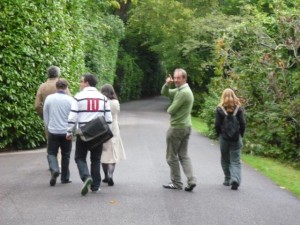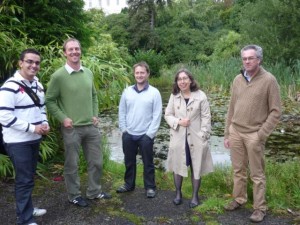Cindy Vallance
In my last post, I promised to share some thoughts from a class I attended as a result of the Change Academy. The Thinking Environment master class brought together a mix of University staff across a range of institutions and staff type – academic and professional services, to consider how we can have more productive meetings, solve business problems, create strategies and build stronger relationships. Sounds good? Of course? Simple? Yes. Easy? Not at all.
The principles from the class are built on the writings of Nancy Kline, and as would be expected, there are ten core principles (she states in her book she’d welcome an eleventh so if you think of another, let her know).
For this posting, I’m going to focus on just the first, and the most powerful. ATTENTION. “Thinking for yourself is the thing on which everything else depends.” I often tell people that one thing I enjoy about working at a University is working with people who think for a living. Academic staff member, professional service staff member, or student – ideas are the lifeblood of a University. But when we are all so busy, when do we actually find time to think? And what is the quality of our thinking? Is it possible for us to help each other to think? And if it is, how would we go about it?
How do we feel when we truly feel listened to? A sampling of responses from those who attended the class include:
I am more likely to solve challenges, share, and give more
I feel more confident
It clarifies my thoughts in my own mind
I feel validated and worthwhile
I feel a better connection with the listener
But listening can be a radical act, especially when we are so often in a hurry. When was the last time someone asked you, “What do you think, what do you really think?” And then waited for you to answer at length and in detail?
We think we listen but we don’t. We finish each others’ sentences, we interrupt, we wait to begin our own story or response, we get ready to share our advice and expertise, we look at our watches, or we walk away. What if we listened with full ATTENTION, giving every ounce of our energy, not to what we will say next, but to what the other person is saying?
People are often interrupted after speaking for 90 seconds or less. How much quality thinking can happen in 90 seconds? Why do we interrupt? My idea is better than yours; if I don’t speak now I will never get a word in edgewise; I know what you are about to say; interrupting will save time; nothing about your idea will improve with further elaboration.
The reality is that we will often be wrong if we assume we know what someone will say next. An example, from Nancy Kline’s book illustrated this. One person began “I don’t know what to do about Larry. As his manager, I think we should recommend that we fire”… and then she stopped mid-sentence. Nancy Kline waited three seconds and was about to say “Larry” when the person said “up his imagination and natural talent a bit more.” A radically different response – especially for Larry!
So, if you do nothing else, if you read no more, if you decide you’re not interested in nine other ways to create a thinking environment…start practicing this one and next time someone speaks, simply pay rapt ATTENTION, don’t interrupt, don’t think of your response, just really listen.








